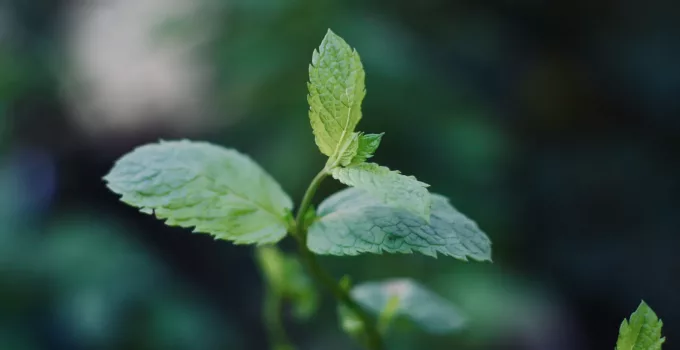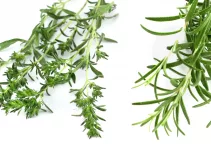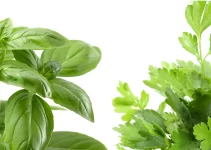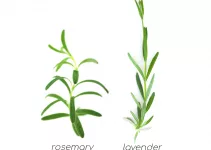The problem with answering the question why are mint leaves turning white is the fact that it can have multiple answers.
Why do I say that it’s a problem, besides the fact that white spots on leaves or mint leaves turning yellow or leaves having black spots or mint rust are never a thing you want to see on your plant?
Because, if there are multiple answers, meaning multiple causes for mint leaves turning white, then it also means that you must establish which of the answers applies to your plant. Sometimes, plant sufferings are not straightforward.
Usually, there are a few causes that cause spots on leaves of plants: incorrect watering habits, disease, pests or plant bugs, nutrients deficiency, improper sun exposure. Now, let’s see which of these apply to our situation of why are mint leaves turning white.
Table of Contents
Why Are Mint Leaves Turning White? The Main Causes
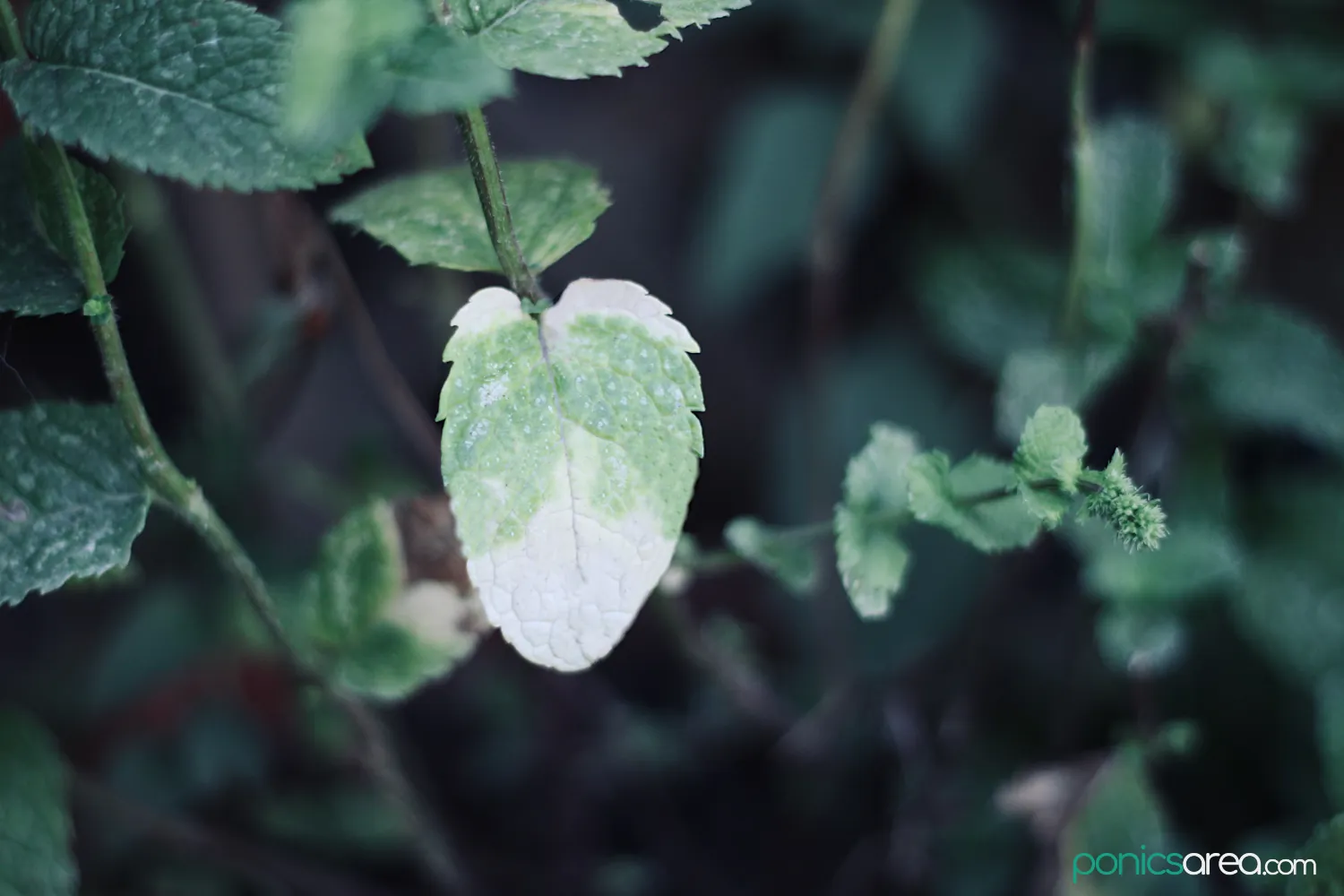
Let’s see which factors will lead to mint leaves turning white, to your mint plant having white spots on leaves:
- pests or plant bugs (spider mites, aphids, leafhoppers, thrips or other bugs) – spider mites, aphids, and other pests can also lead to a herb wilting because they suck the sap from the leaves or they can lead to yellow spots on leaves, the spots are not always white
- powdery mildew on mint leaves – a fungal disease and if you’ve ever wondered what is the white stuff on mint leaves the answer can be powdery mildew, although you might be tempted to say that it’s dust
Nutrients deficiency usually leads to yellow leaves because it can cause a reduced production of chlorophyll. So, we can eliminate this factor from the answer to the question why are mint leaves turning white.
1. Spider mites and pests
Mint leaves turning white can be caused by spider mites. These bugs can cause silvery dots on the leaves.
How do you know for sure if spider mites are the cause? If there’s a delicate web to be found.
In the dark, you can use the flashlight on your phone to illuminate the herb and see if there are any web coverings.
Spider mites can look like tiny moving dots.
For all the other pests, you should use a magnifying glass. Search underneath the leaves especially.
Aphids love to live on the underside of the leaves but they usually turn leaves yellow on the underside so, it’s not a common cause for white spots. Some species of aphids are white in color but they’re usually present on the undersides of leaves.
Leafhoppers also attack underneath so, you must look for a white stippling patter on the undersides of leaves, along leaf veins. There’s actually a sage leafhopper that prefers herbs in the mint family. They’re pretty difficult to get rid of because, as their name suggests, they are very mobile and active.
Thrips usually lead to curled or distorted leaves.
2. Powdery Mildew on Mint Leaves
One of the main causes for your mint leaves turning white is a fungus known as powdery mildew.
Powdery mildew is a fungus that commonly affects mint varieties but also many other plants in gardens (tomatoes, squash, cucumber, melons, peppers, eggplants, roses, etc.), reducing the quality and quantity of flowers and fruit.
The spores can be carried to other plants by the wind. Pretty much the only good news in all this is that each species attacks only specific plants. If it’s present in your garden, the wind will not spread it to the entire garden. Only to some plants, based on which species of powdery mildew your garden is attacked by.
Furthermore,
Keep in mind that humid conditions that occur during warm days and cool nights can lead to the appearance of powdery mildew on mint. It thrives in warm temperatures of 60-80°F. It affects in a larger proportion plants that are placed in shady areas.
Due to that, it can be severe for mint plants grown in greenhouses, which are definitely at the top for humid and shady environments.
Powdery mildew first appears as powdery white-gray circular colonies, incredibly small in diameter. These colonies can definitely spread over the whole herb. As they age, the color turns to gray. Then, the leaves turn yellow and drop.
How to Get Rid of White Spots on Mint Leaves
We’ve analyzed the causes of why are mint leaves turning white but it’s not enough to know the factors causing spots on leaves.
We must also be aware of what we can do. If the plant can be saved or it’s time to start with a new herb. Obviously, our main hope in discovering why are mint leaves turning white is to be able to save our herb and turn it back to its beautiful unblemished state.
If nothing works, then it’s time to get rid of the herb and start growing a new plant.
1. How to get rid of spider mites and pests
If mint leaves are turning white because of spider mites or other plant bugs, the plant can be saved and restored to its healthy state.
You just have to clean the herb.
There are a few recommendations for cleaning herbs to get rid of spider mites and plant bugs:
- spray the plant with insecticidal soap spray – you can definitely use insecticidal soap spray even if you’re growing organic herbs and it can be used indoors, outdoors, and in greenhouses
- a mixture of alcohol and water – 1 cup of alcohol diluted in 30 oz of water poured in a spray bottle; spray both sides of the leaves and then wipe them off with paper towels
- a mixture of 1 tablespoon neem oil and 1/2 teaspoons dish soap to 1 quart of water (4 cups of warm water for a good mixing) – spray generously on all the leaves
- sticky stakes insect traps – these can attract insects and trap them but they work best for potted plants
- some people also choose to hose down their plants to physically remove as many of the mites as possible, you can do this in the shower with the shower nozzle, water at room temperature
- if only a few leaves are affected by aphids, you can try pruning them
Even if soap sprays are applied to the leaves they can still be edible, just make sure to wash them off really well before using them to make delicious beverage or exciting dishes.
2. How to get rid of powdery mildew
We’ve established that powdery mildew is a fungus and it can be one of the main causes for why are mint leaves turning white.
Now, let’s see what we can do about it.
The first thing to try is to water the leaves from above. This can work because the powdery mildew spores can’t survive in a film of water, they will be simply washed off.
Don’t overdo it because you’ll run into what overwatering can do to a herb. It can even kill it.
The next solution comes in the form of fungicides. But they are more efficient if the powdery mildew hasn’t become established.
Sulfur is one of those fungicides that works against powdery mildew but it works best as a preventive fungicide for mint. It’s good at prevention because sulfur prevents fungal spores from germinating.
For example, sulfur should first be used when the plant is 4 to 6 inches tall.
You should also keep in mind that it’s important to eliminate sulfide contamination, which means that you should let 30 days pass after the last sulfur application before harvesting the mint leaves. But, depending on which mildew fungicide you’re using, the time period can be much shorter so, read the instructions.
The good news is that sulfur fungicides are organic.
Another solution is to make your own treatment for powdery mildew.
According to saferbrand.com, you can combine one tablespoon baking soda and one-half teaspoon of liquid, non-detergent soap with one gallon of water and spray this mixture onto the herb.
Another option is to use a solution made of three parts water to one part mouthwash.
White Spots on Mint Leaves Appearance
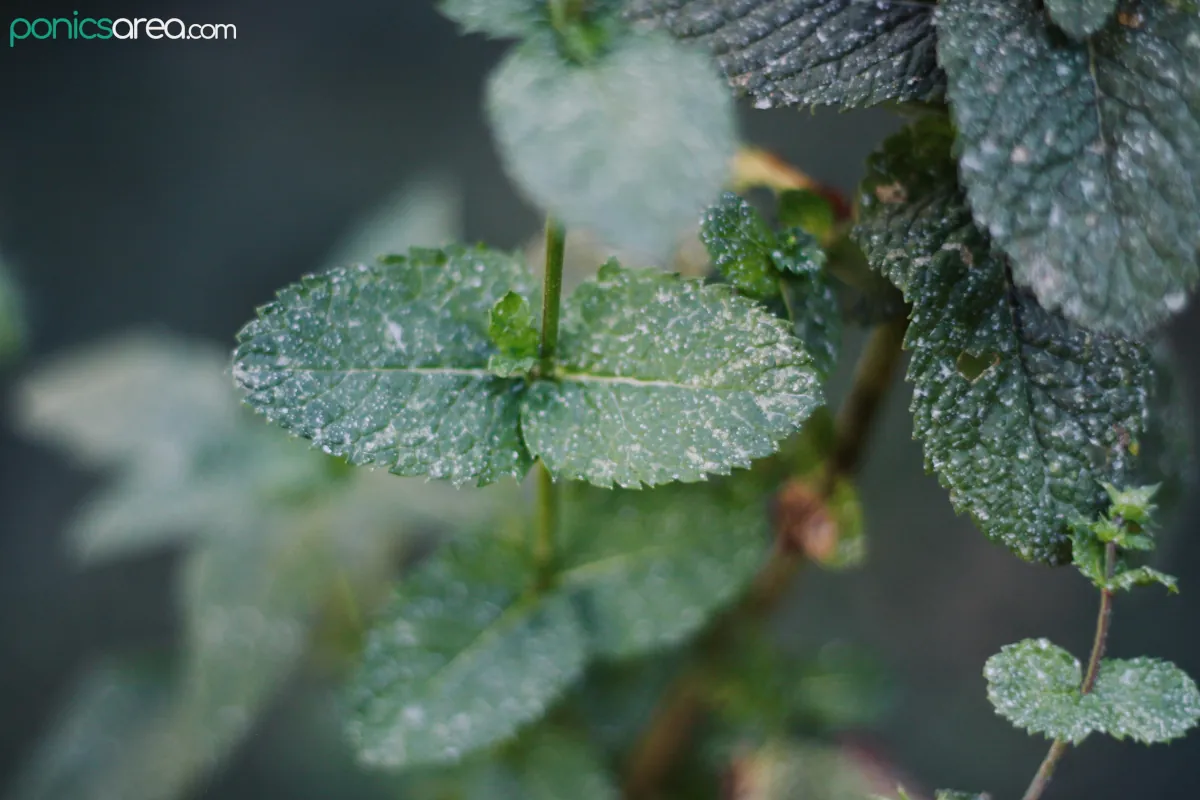
In the beginning, the appearance of white spots can manifest as if mint leaves have dried fine mud on them.
You might mistake the leaves of herbs for being dirty or dusty. This might be powdery mildew.
Pay attention to that, too. Don’t make the mistake of thinking your herbs are dirty when they might be afflicted by a disease.
If it’s an indoor potted herb, it’s pretty hard for the leaves to get that much dust on them. Especially on all of them and if the soil looks completely clean. And since the dust won’t come off if you brush it gently.
This dirty dusty appearance can evolve to leaves looking as if someone has sprinkled flour on them. Or it can appear as white-gray fluffy spots.
Can all mint varieties get white spots on leaves? Does it happen to peppermint, spearmint, and all the other wonderful genus Mentha varieties?
Yes, we are talking about the entire genus Mentha, the entire mint family can be afflicted by disease and insects.
Sometimes, if you have other herbs close to the suffering mint, the other herbs will suffer from white spots on their leaves, too.
Things can turn even more serious than finding the answer to why are mint leaves turning white. It might be a number of plants that are close to the mint plant that suffer from the same white spots on leaves.
The obvious solution is to keep the potted herb away from the other herbs and plants.
How to Prevent White Spots on Mint Leaves
Can you actually do anything to prevent your mint leaves from turning white? Prevention is always better than having to treat or remedy something.
Use neem oil
Spray your plants with a mixture of neem oil and water to prevents pests and bugs. Half a teaspoon to 4 cups of water is enough. Use warm water to aid in mixing. Warm not hot.
Spray the mixture until the plant is saturated and the solution starts dripping. It’s good for the soil, too. It can prevent fungus gnats.
You can do the spraying with neem oil solution 3 times, applying it once every 4-5 days.
Some people might find the smell unpleasant but keep in mind that it’s a huge help against pests and bugs.
It can create sun sensitivity so, don’t use it on too hot days.
And, just take care of your herbs.
How to care for mint plants
- water the mint regularly, even every day in the morning, keeping the soil moist but ensure good drainage
- use medium-rich potting soil or a soil rich with organic matter
- prune it and harvest regularly to keep it contained
- it thrives in temperatures of 70-75 degrees F
- keep it in a sunny place or use grow lights if you’re growing indoors
- it might not need fertilizer but it can benefit from added nutrients
Can You Eat Mint Leaves with White Spots on Them?
The answer is yes.
Although, to give you my honest opinion, I wouldn’t and couldn’t. Plus, the flavor might not be that intense.
Frankly, would you want to eat plants affected by fungus or pests or bugs?
Even if you know nothing about why are mint leaves turning white, it’s definitely not visually appealing to eat mint leaves with white spots on them.

